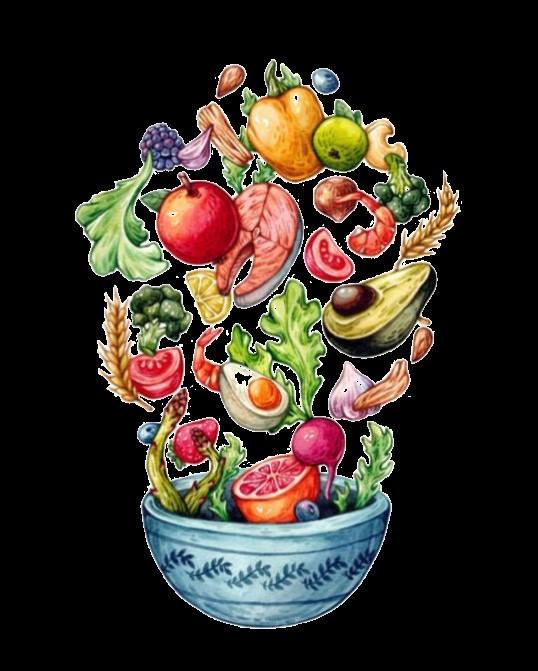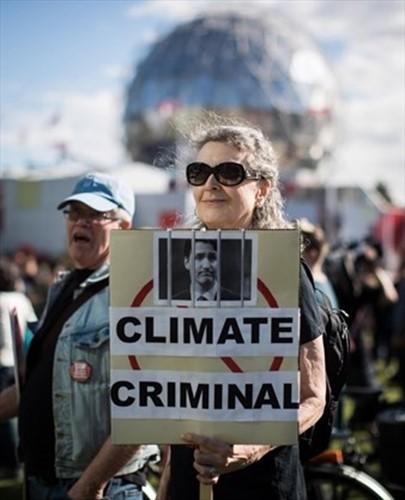
8 minute read
My Experience: The Black Urban Growers Conference 2019
By Naajia Shakir
Farming in urban communities is a very effective way in developing green infrastructure, especially the epidemic of food insecurity in these areas. Though, I managed an urban farm this past Summer and am pretty acquainte d with the subje ct, I thought it was important learning and listening to others' experiences in urban agriculture. So, on October 26th, 2019 I traveled to The New School in New York City to attend the a n n u a l B l a c k U r b a n G r o w e r s Conference. The conference is three days long and consists of multiple workshops to enlighten and teach urban farmers or interested farme rs about diffe re nt topics within agriculture. T h e i n d i v i d u a l s f a c i l i t a t i n g t h e workshops include d chefs, farmers, the U n i t e d S t a t e s D e p a r t m e n t o f Agriculture (USDA), and herbalists. Like the title of the event, the c o n f e r e n c e w a s innovated to create a space for black urban farmers, but anyone from any ethnic group interested in urban agriculture is always welcomed with open arms.
The first workshop I attended was about USDA programs that fund and aid farms around the country. The presenter spoke about many strategies the USDA takes to help urban farms in America, some of their steps include planning, application, and implementation. The concerns the USDA has for farms involve soil erosion, water quality for the plants, and that the plants don’t receive enough moisture. To solve these issues the USDA provides many resources to farmers to ensure the health of their crops. To extend growing seasons, reduce and control pest problems, and minimize damage to plants from excessive rain and sun -- the USDA may provide high tunnels or hoophouses. They are tents that hover over beds of crops; high tunnels also need strips of grass on each side of the tent to prevent the soil from eroding. For those who

want to start an urban farm of their own, the USDA has an Urban Agriculture Tool Kit on their website for anyone to view.
The second workshop I went to wa s e nt it le d “N o ur is hi ng B la c k Wellness Through Healing Foods”. When I first walked into the room the wor k s hop wa s be ing he ld, the pre se nte r was chopping onions, ginger, and butternut squash. She then started a conversation about food and how we should eat more like our ancestors, since the conference was focused more towards black people, the chef handed out a food pyramid of an African heritage diet. The presenter mentioned that people should also eat more within season, which is why she was demonstrating how to make butternut squash soup with ginger. A problem with eating out of season is that all the fruits and vegetables we receive that do not grow where we live had to travel hours or days so that we could eat it. To preserve the taste of the se food s, many c orp orations transporting fruits and vegetables will induce them with chemicals or put w a x o v e r t h e m ( t h i s i s m o s t specifically seen with apples). This d i s c u s s i o n t h e n s w i t c h e d t o communities that lack healthy foods or any foods at all. One woman attending the workshop talked about how her urban farm would provide meals to families because they ran out of food stamps before the next month, due to the food in stores being expensive. Most people coming to her farm for events would be children and adults that need food around New York, and she wanted advice on different strategies to reach out to communities around the city. At the end of the workshop, everyone was able to taste the finished product of the butternut squash soup, and it was delicious.
The last few events of the conference were about the power of food and land. I viewed a presentation from the National Black Food and Justice Alliance, and they spoke about their dreams of freedom and how they correlate within the black community. The presenter mentioned that food is often used as a political weapon, and through urban farming people are able to control where their food is from and feed communities in need.
T he B la c k Ur b a n Gr owe r s Conference was so insightful in regards to food accessibility and the p o w e r o f f o o d i n d i f f e r e n t communities. I hope that I will be able to attend the conference next year again.

The Canadian Pipeline Paradox
By Gayatri Anguloori
Earlier this year, Canada’s Prime Minister, Justin Trudeau, sat down for an interview on Netflix’s Patriot Act—a political commentary show hosted by comedian, Hasan Minhaj. The episode is titled, “The Two Sides of Canada”—appropriately alluding to the doublespeak and contradictory policies regarding environmental protection and climate actions that Prime Minister Trudeau has supported. Prime Minister Trudeau has arguably been celebrated as the poster child of the left. With policies supporting refugee immigration to Canada and First Nations civil rights, to name a few, Trudeau has become an influential figure for many liberals and progressives, not only in Canada, but around the world. More specifically, Trudeau has ran for his position in office in support of the Paris Agreement and combatting climate change — creating a persona of a proactive politician who is determined to make changes in protecting the environment. However, Trudeau’s rhetoric regarding environmental protection does not align with his policies. Although continuously vowing to be a warrior against climate change, accounts of Trudeau being “very interested” in pipeline agreements date back to 2014 (Gillis). More recently, the Trudeau government purchased the Trans Mountain Pipeline (TMX), a pipeline that runs from the Canadian provinces of Alberta to British Columbia, for $3.4 billion from Texas-based Kinder Morgan (Coletta). The New York Times reports that the pipeline would be transporting 890,000 barrels of crude oil every single day—posing imminent threats of water table pollution and ecosystem endangerment for the communities the pipeline runs through.
With promises of pipelines and allegiances to non-renewables, is Prime Minister Trudeau being proven as an apparent liar? Well, not exactly. Although Mr. Trudeau has backed the construction of the TMX pipeline since 2016 —when he originally purchased it against proper consultation with the indigenous groups it would be affecting—he has repeatedly justified his plan by saying that the present investment in oil will generate enough money to fund non-renewable energy developments in the future. Prime Minister Trudeau claims that “every dollar earned from the expansion project will be invested in Canada’s transition to green energy” thus, generating about $500 million per year (Beaumont). Additionally, the construction of the pipeline would make way for middle class growth through thousands of new Canadian jobs. Corporate rationales promoting fossil fuels that attempt to masquerade as green policies continue to be backed by Trudeau and his administration. Amidst all the rhetoric and explanations the Greenpeace. 2019. prime minister has conveyed to

rationalize his plans, the construction of a pipeline that would transport hundreds of thousands of barrels of crude oil a day does not seem like the answer to climate change during an age of imminent environmental disaster. With being “79 megatons of greenhouse gases away from [their] 2030 reduction targets”, building the TMX pipeline would be counterproductive to Canada—a country that is currently not up to standards with their oil and gas commitments they made in the Paris Agreement (Krishnan). In his interview with Hasan Minhaj, Trudeau mentions that “we are not going to be polluting more; we’re going to be putting a price on pollution and we are going to move forward in a way that a lot of people choose to make fun of by saying ‘you can’t do both at the same time’”. If you are confused at this statement, your response is appropriate. Minhaj and activists alike, immediately noticed this utterly paradoxical policy and compared building the pipeline to combat climate change with “selling cigarettes to have money to fight cancer” and “trying to whiten your teeth by drinking wine at every meal”.
Policies and promises are not adding up here and have left original supporters of the prime minister feeling betrayed and defeated. Keith Stewart, a senior strategists at Greenpeace Canada, explains that “there is disappointment Donna Oleksiuk at a protest against because he [Trudeau] came in with big promises of Kinder Morgan TMX Pipeline in Vand o i n g p o l i t i c s d i f f e r e n t l y a n d t h a t h a s n ’ t materialized” (Williams). Time is ticking for humans to make significant changes to energy policies in order to save our planet from irreversible damage that will tarnish generations to come. It is the responsibility of the world’s first world nations that dominate in waste production and energy consumption, to take a stand. Tired out fairytales about pipelines and non-renewable energy are just not going to cut it anymore.

Works Cited
Krishnan, Manisha. “The Most Cringe Moments of Justin Trudeau's Interview with Hasan Minhaj.” Vice, 3 Sept. 2019, https://www.vice.com/ en_ca/article/3kxdaw/here-are-the-most-cringe-moments-of-justin-trudeaus-interview-with-hasan-minhaj. Gillis, Damien. “Justin Trudeau's Two-Faced Climate Game.” The New York Times, The New York Times, 2 May 2018, https:// www.nytimes.com/2018/05/02/opinion/trudeau-climate-kinder-morgan-pipeline.html. Beaumont, Hilary. “Canada Declares Climate Emergency, Then Approves Massive Oil Pipeline Expansion.” Vice, 18 June 2019, https:// www.vice.com/en_ca/article/wjvkqq/canada-justin-trudeau-declares-climate-emergency-then-approves-trans-mountain-pipelineexpansion. Coletta, Amanda. “An Oil Pipeline Expansion Is Dividing Canada's Indigenous Peoples.” The Washington Post, WP Company, 15 Sept. 2019, https://www.washingtonpost.com/world/the_americas/an-oil-pipeline-expansion-is-dividing-canadas-indigenous-peoples/2019/09/14/ ec74ac82-b961-11e9-8e83-4e6687e99814_story.html.










